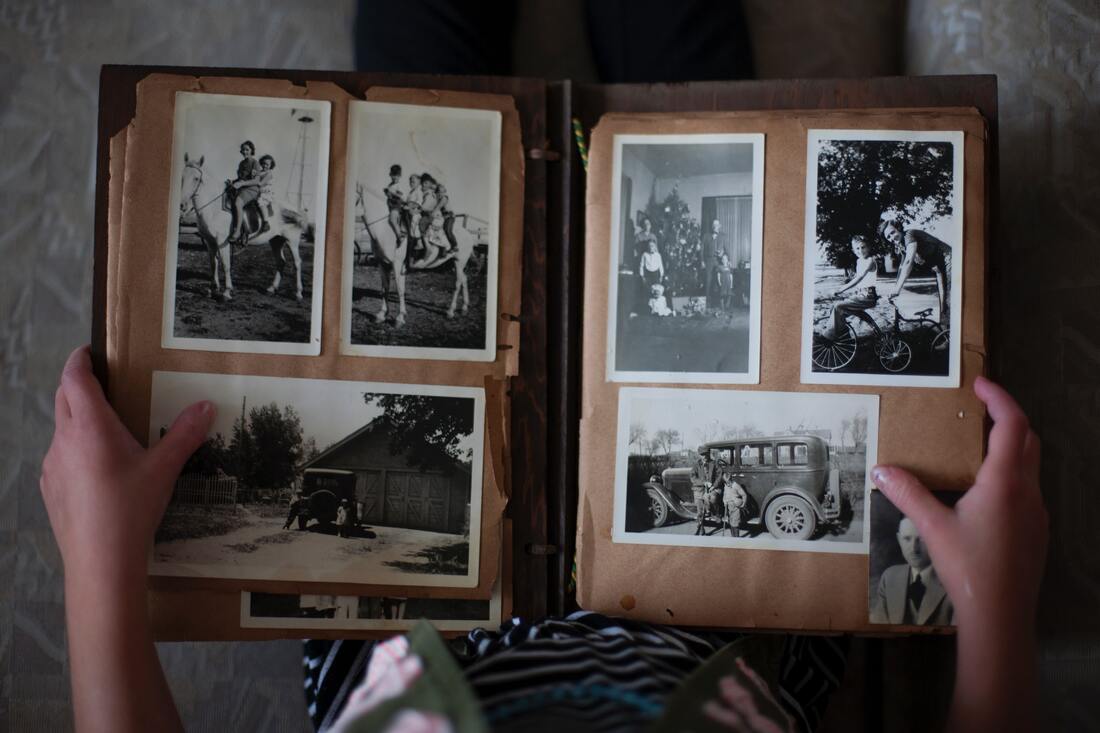 Photo by Laura Fuhrman on Unsplash As part of my effort to digitize and protect family documents, I have been exploring better ways to store those originals. As you write your ancestors’ stories, the family photos you share bring their stories to life. Let’s look at ways to protect your family photos. Like many of you, I have moved to safe methods for storing original photos and documents but still need to take the extra step of investing in archival quality storage. The expense of doing this has been part of the reason that I haven’t jumped in with both feet. Ah with an unlimited budget imagine what we could do! There are some things that you can do to protect those photos now.
Do you remember when we were excited about “magnetic” photo albums? Of course, now we know that using these albums is harmful not only to “old” photos but any photos due to the glue used. So, if you still have photos in a magnetic photo album, please remove them and store them in an acid free box or appropriate album. Do you have the cardboard photocards from the late 1800s/early 1900s? How about studio photos? Your first step would be to digitize these photos and have prints made if you wish to display the image. Never display the original. The original should be stored in a protective sleeve and put in an acid free box. This will keep the photo protected from scratches and hopefully maintained for years to come. One tip I read is to ensure that you do not overfill the box or cause any of the photos to bend or curl. My personal exception to this is a WWI camp picture of a great uncle which is in a frame about 9 x 40 inches. It seems it would be safer left in its original frame but stored in a cool dark closet. I don’t know of a storage box that would readily protect this awkward size. One of the places where you can learn some of the basics about photo storage is the National Archives. They have a page dedicated to the storage of family documents and photos. You also can learn more about recommendations related to digitization here. One tip they mention is the 3-2-1 digitization which means having two copies of different storage devices plus another backup off site. If you haven’t been using online storage for your family history, it is something that you may want to explore. I back up on an external hard drive so that protects me if my computer crashes, but it would not help me if there was a fire in my home. There are several archival companies that you can purchase supplies from when you get to that point. Here are a few. University Products Gaylord Archival Hollinger Metal Edge Cyndi’s List – Preservation My first step is to review my originals and confirm that I have digitized copies, clearly labeled. Next, I am going to determine how many photos I have of each size so that I will know what type of envelopes and boxes would work. Then I am going to try not to faint from sticker shock when I see what is available on these sites. My plan is to find a budget friendly but safe way to store these memories of the past. While I might not be able to immediately move everything to archival level storage, I can take baby steps to get there. And you can too! Reviewing your photos and ensuring that you have labeled digital backup is one way to preserve these memories for the future. And as you can afford it, think about moving to archival storage methods to keep those originals safe for another 100 years. Enjoy the time spent reviewing your treasured photos and good luck taking it to the next step!
0 Comments
Leave a Reply. |
AuthorWith a lifelong passion for genealogy and history, the author enjoys the opportunity to share genealogy tidbits, inspiring others to research and write their family story. Archives
July 2024
Categories |



 RSS Feed
RSS Feed